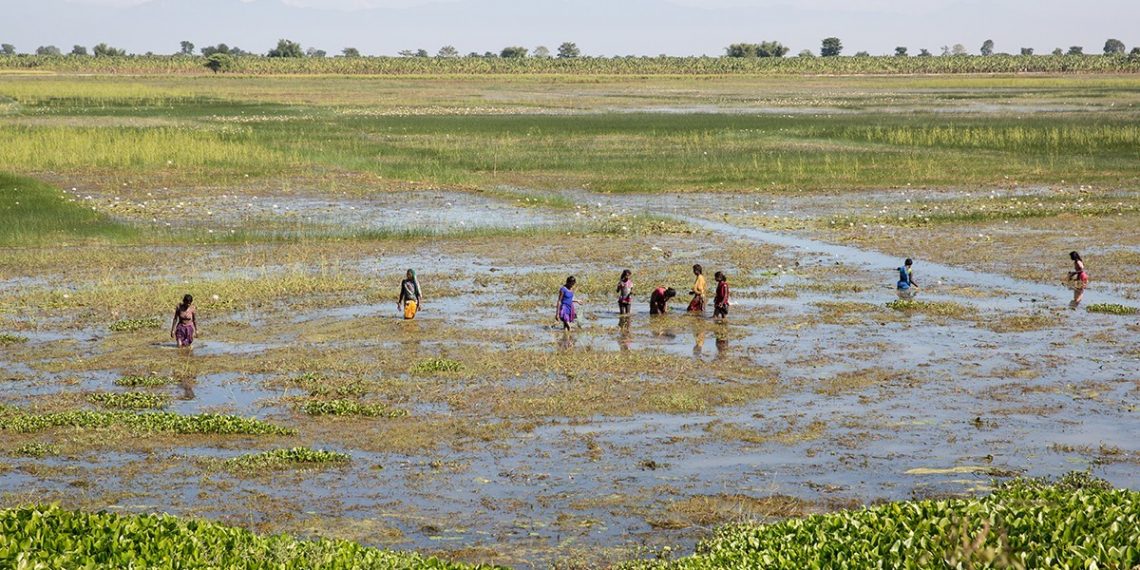International Organization for Migration (IOM)
The relationship between migration and the environment is not new. From the mid-19th century Great Irish Famine to the early 20th century Dust Bowl, we have many examples in history of people choosing or being forced to migrate because of changes in their physical environments. What is new now is that the world is grappling with the devastating impacts of climate change. With greater awareness came increased political recognition and there is now a widespread consensus on the need to address the adverse impacts of climate change on the migration of people now and in the future.
Climate migration is a reality in all parts of the world, however, the situation in what is known as “vulnerable countries” represents a particular challenge. Vulnerable countries are Least Developed Countries (LDCs), Landlocked Developing Countries (LLDCs) and Small Island Developing States (SIDS). In 2016, the 15 countries with the highest vulnerability to natural hazards were LDCs, LLDCs and SIDS. These countries are disproportionately affected by the negative impacts of climate change and are often least able to cope due to their structural constraints and geographical disadvantages. At the same time, they contribute the least to climate change. These countries are among the strongest advocates for more robust action on climate migration as they face very real challenges that affect all aspects of the daily lives of their populations.
Climate migration challenges take multiple forms in these vulnerable countries. In LDCs, the poorest and most vulnerable segment of the international community, climate change pressures can intersect with numerous development-related challenges as well as security issues. The combination of those factors often leads people to migrate in search of better or safer lives. For example, the Lake Chad Basin is currently experiencing grave environmental degradation, in a context where populations face the violence linked to the presence of groups such as Boko Haram. Migration patterns in that region have been reshaped due to these factors. Some LDCs such as Ethiopia and Bangladesh are sometimes saddled with the “double stress” of having to deal with internal climate migration, while also hosting large numbers of refugees from neighboring countries.
LLDCs often have scarce water resources, further depleted by the impacts of climate change. This can create pressure on populations to migrate for better access to water. For example, nomadic pastoralists are often pushed to alter their traditional routes and travel further and for longer periods in search of water and land resources. Climate change is also affecting livelihoods, such as in Mongolia where extremely cold winters called dzud deplete nomadic livestock and destroy agriculture opportunities, pushing rural populations to migrate to urban centers.

Displaced children from Manam Island play in the water © IOM / Muse Mohammed
SIDS are recognized as a special case for sustainable development as they face greater risk of marginalization due to their small size and remoteness. They also have fragile natural environments, and natural disasters such as storms and cyclones have a devastating impact on the population. The adverse impacts of climate change have contributed to the migration of thousands of people in SIDS in the last decade alone. One specific type of migration in this context is the planned relocation of people, where entire communities need to be moved, generally further inland, to escape climate change impacts such as coastal erosion. In Fiji, following Tropical Cyclone Winston in 2016, more than 60 villages were relocated to reduce people’s exposure and vulnerability to further risks.
The current situation is clearly preoccupying and addressing the negative impacts of climate change on the migration of people in vulnerable countries should represent a priority now and for the future. We are moving towards a high level week of crucial political dialogues at the United Nations General Assembly in September 2019. In particular, the United Nations Climate Action Summit is a key opportunity to highlight the challenges of most vulnerable countries and put forward commitments and solutions to address climate migration issues.
The options for action on climate migration outlined in the first negotiated agreement on international migration, the Global Compact for Safe Orderly and Regular Migration (GCM) can help guide concrete action in support of affected migrants and communities. Priority should be given to mitigate the impacts of climate change and promote climate change adaptation in places where populations are at risk of forced migration. However, it is also clear that in some places, it will not be possible for populations to remain in situ and it is of utmost importance to think about how legal migration options can be offered to those migrants. It is also important to factor in the positive role that migrants can play in the fight against climate change, such as by facilitating remittances and transfer of skills and knowledge towards climate action.
For more information on climate change and migration in vulnerable countries, read the recent publication produced jointly by the International Organization for Migration (IOM) and the United Nations Office of the High Representative for the Least Developed Countries, Landlocked Developing Countries and Small Island Developing States (UN-OHRLLS), and visit the IOM Environmental Migration Portal.



